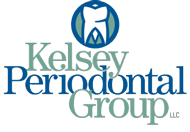Periodontic – Endodontic Lesions
It is well chronicled that periodontal inflammatory destruction is often a silent, non-painful process which can take many patients by surprise when they learn that they have experienced significant levels of disease. One of the few instances where pain originates from a lesion of periodontal origin is the periodontal abscess. If a diagnosis of a periodontal abscess is rendered, it is also important to note that frequently the teeth associated with a periodontal abscess may also require endodontic care due to the amount of bone loss involved. There are four types of associations between the periodontium and the apex / root canal systems of teeth.
Primary Periodontal Lesions. Primary periodontal lesions have the distinction of being associated with endodontically vital teeth. Partial pulpal necrosis can occur in multiple rooted teeth and has the potential to create havoc with traditional examination techniques when formulating a diagnosis, but it is more likely that the associated lesion is of periodontal origin alone when the tooth is clinically vital. There is a wide variety of treatment options available for these teeth, but this discussion is outside the intended scope of this post. What is important to note is that these teeth can be treated periodontally without any need for endodontic intervention.
Primary Endodontic Lesions. Primary endodontic lesions are associated with clinically periodontally healthy teeth, but these teeth have become non-vital — for any number of reasons — and require endodontic therapy to re-establish a healthy apical periodontium. Once again the treatment options for these teeth are outside of the intent of this post, but it should be noted that treatment is limited to endodontic therapy without any further periodontal intervention required.
Combined Lesions. These can be broken down into three sub-categories. Endodontic-Periodontic Lesions: These lesions originate with an endodontic infection on an otherwise periodontally healthy tooth. The necrotic drainage follows the path of the periodontal ligament and results in destruction of the local supporting structures, including the ligament and associated alveolar bone. This destruction results in a tooth that tests non-vital endodontically and is associated with a deep probe depth at the site of drainage. Following endodontic treatment, the periodontal issues typically resolve.
Periodontal-Endodontic Lesions: These lesions originate with the loss of adjacent periodontal supporting bone, and as this bone is lost, dentinal tubules and accessory canals become exposed to the bacteria in the pocket and have the potential to become exposed to the oral cavity itself. In extreme involvement, the periodontal lesion may even encompass the apex of the tooth allowing for bacterial access to the main canal(s) of the root canal system. The bacteria is then able to proliferate within the root canal and render the tooth necrotic. Occasionally periodontal treatment itself may be the precipitating factor of this necrosis if the root planing or surface treatment opens a previously occluded canal or compromises the blood or nutrient supply to the tooth. However, this is a small risk when one considers the vast amount of teeth that undergo root planing and periodontal surgery every year and the few cases of resulting endodontic involvement.
True Combined Lesions: True combined lesions occur in the rare instance that an apically progressing periodontal defect encounters an independent coronally progressing periapical defect. Both of these infections occur completely independent of each other, and have bacteria associated exclusively with their individual condition. These lesions then combine allowing the previously different bacterial populations to associate. If one elects to not extract a tooth affected by a combined lesion, the recommended treatment of these types of lesions is initially endodontic in nature with close monitoring of the periodontal healing. The tooth should be periodontally re-evaluated for 3-6 months following root canal therapy to address any further periodontal needs. The periodontal healing of these lesions tends to be dependent upon the severity and duration of the periodontal involvement. As the involvement becomes more chronic there is a higher likelihood of needing periodontal intervention following endodontic healing. Once endodontic healing is complete, the periodontal therapy is similar to any other primary periodontal defect with bone grafting and periodontal regeneration often being possible.
Leave a reply →